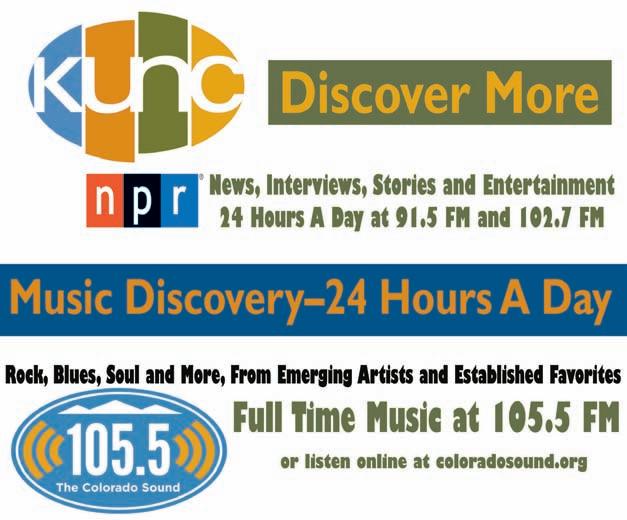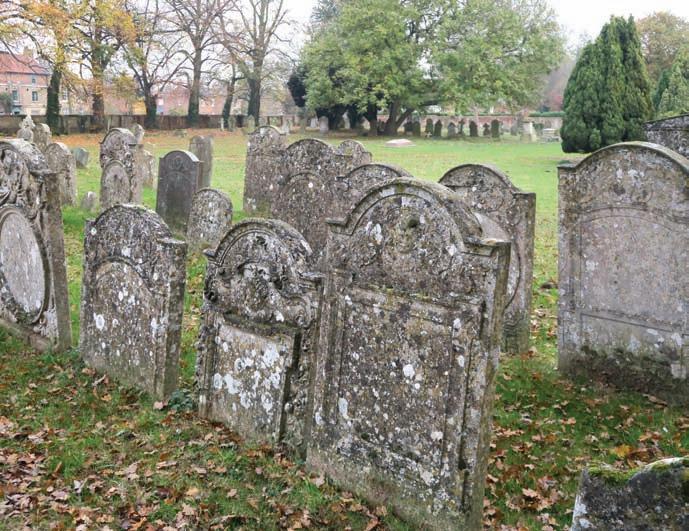
20 minute read
Danish Plan: Could the plague bring reform to Congress?
Adam Sloat Broker/Owner Your Boulder Real Estate Expert and Music Guy
MORTGAGE BROKER Q&A WITH MY FRIEND JEFF
Advertisement
Question: Jeff, any tricks or suggestions for homebuyers to secure the best mortgages and to make their offers really stand out from the pack?
Answer: Listing agents really like to hear from the buyer’s lender and know they are on top of things, so if you can select a local mortgage professional who communicates well with local real estate agents - that will go a long way to make your offer more attractive. Getting fully pre-approved ahead of time, where all that might be left to do is the appraisal on the home definitely helps too.” - Jeff Waymire, Trustlink Mortgage

Could the plague bring reform to Congress? by Paul Danish
The latest China Plague (at least the fourth to originate in the People’s Republic since 1957) has set off discussion in Congress as to whether members of the House and the Senate should be allowed to vote remotely.
They should, and for reasons that go far beyond the need for social distancing when the coronavirus is loose in the land.
Plague or no plague, the real question should be why should Congress continue to convene in the Capitol (the building), or for that matter in the capital (Washington, D.C.), when it could conduct all of its business remotely?
Conducting the business of the Congress by video conferencing and the internet would have advantages that extend beyond keeping members from spreading the coronavirus to each other during quorum calls. It would allow for a profound and long-overdue restructuring of how Congress does business, starting with allowing for an increase in the size of the House of Representatives.
Currently the House of Representatives consists of 435 members. There is nothing magic about the number. The size of the House of Representatives was set by law (not by the Constitution) at 435 in 1929, ostensibly because that was the maximum number of Congressmen who could be seated comfortably in the House chamber.
Failure to expand the size of the House (or the House chamber) since 1929 has led to a near tripling in the population of the average congressional district, from about 250,000 in 1929 to about 720,000 today. That alone tells you why the cost of running for Congress, and the influence of money in politics, has soared in the last century. It also tells you why Americans have less and less personal contact with their congressmen. But if the House of Representatives were to start conducting its business via videoconferencing, it would no longer have to let the size of its membership be defined by the size of its meeting room. It could, in fact, limit the size of congressional districts to a size that was contemplated at the time the Bill of Rights was drafted — no more than 50,000 citizens per congressional distirct.
(There was even an attempt to write that number into the Constitution when the Bill of Rights was sent to the states for ratification. The original bill had 12 amendments, not 10. Two of the original 12 were not initially ratified. One of these, the one stating that a congressional pay raise couldn’t take effect until after the next congressional election, was ratified on May 5, 1992, more than 202 years after it was proposed. The other had been intended to limit the maximum population of congressional districts to 50,000, but the wording of the amendment was botched; it ended up saying that 50,000 people could be represented by no more than one congressman, which meant that a single congressman could still represent more than 50,000. Most state legislatures chose not to consider it.) But if Congress were to conduct its business exclusively online and never set foot in Washington, conIt would be possible to mount a congressional campaign in which the largest costs were shoe leather and a relatively small number of leaflets. Talk about getting big money out of politics.
gressional districts could be made much smaller, maybe even to 50,000 people each.
If this were to be done, the size of the Congress would expand from 435 to 6,600.
The City of Boulder is currently part of Colorado’s 2nd Congressional District, which includes all or part of 10 Colorado counties and has a population that in 2016 was estimated at 804,000. Boulder’s population is currently estimated at about 107,000. If the size of congressional districts were limited to 50,000, the city would have two representatives in Congress and a slice of a third.
A congressional district that consisted of roughly half the homes in Boulder would be small enough that a candidate could personally knock on most of the doors in it. In other words, it would be possible to mount a congressional campaign in which the largest costs were shoe leather and a relatively small number of leaflets. Talk about getting big money out of politics.
But wouldn’t a 6,600-member House of Representatives be too big and clumsy to function as a deliberative body?
No, it wouldn’t, especially if it leveraged the new ways of doing business that video conferencing would allow.
Start with floor debate on major legislation. Currently such debates are not 435-member free-for-alls. They are highly structured affairs to which a limited amount of time is allocated, and for which each side lines up teams of speakers and appoints floor managers who allocate microphone

time to members of their teams. Such debates could easily be conducted via video conferencing.
Most of the actual crafting of legislation takes place in committees and subcommittees. These could be expanded both in number and in membership to reflect an enlarged House. This would serve to reduce the workload of any given committee, especially if there was a limit placed on how many bills an individual member could submit in a given session of Congress. According to Wikipedia, 24 of 99 state legislature chambers, including both of Colorado’s, have such limits.
Conducting congressional business online would also allow for the creation of new ways of deliberation. Moderated online conferences could take the place of floor debate. Twitteror Facebook-type feeds could provide a new format for hearings.
For those occasions like the State of the Union where the Congress had to be brought together in the flesh, there’s an obvious option that wouldn’t involve building a new Capitol.
Meet outdoors on the lawn on the west side of the current Capitol. Members would stand. February weather in Washington can seriously suck, which would encourage the POTUS to be brief and to the point. And Nancy Polosi could burn her copy of the president’s speech page by page in a golden brazier to keep her hands warm, which would be a far more dramatic gesture than merely tearing it up after the session. This opinion column does not necessarily reflect the views of Boulder
TRADITIONAL VIETNAMESE PHO HOUSE

Curbside Take Out Now Available Delivery Available through Grub Hub, Door Dash, & Uber Eats

2855 28th Street, Boulder, CO 80301 • 303-449-0350 DINE IN - TAKE OUT • www.boulderpho.eat24hour.com

FROM THE DIVIDE TO YOUR DOOR!
INTRODUCTORY OFFER Free Two 5-Gallon Bottles of Water & One Months Rental on the Dispenser of Your Choice


Offering Glass Bottle Options
303.440.0432 • www.IndianPeaksSpringWater.com LOOK FOR OUR SOLAR WATER CART AT BOULDER EVENTS

As Daniel (a pseudonym) walks up to the Severe Weather Shelter operated by Bridge House on 30th Street and Valmont, he goes through a health screening in a tent outside. After getting his temperature taken and answering questions about his recent health, he’s given a green sticker before he can enter the facility. It’s a sign that he’s all clear — not showing symptoms of COVID-19, the disease caused by the quickly spreading coronavirus.
“Everything changes day to day,” Daniel says, as Homeless Solutions Boulder County (HSBC) and its partner service agencies have been constantly adapting to public health recommendations in light of the global pandemic, causing cities, businesses and most of daily life to shut down. “We realized pretty early on that the homeless were going to be the ones that were possibly the most at risk and so that’s why we put a real focus on trying to come up with a solution and staying ahead of this,” says Kurt Firnhaber, the City of Boulder’s housing and human services director. Not only is this population at medical risk, given they live outside and often have weaker immune systems, Firnhaber says, but they also often stay in close quarters at shelters in Boulder and Longmont.
“And if they become positive, there’s not a place for them to recover, and the hospitals simply cannot absorb that,” he says. “In a certain way we’re sort of planning for the worst and hoping for the best.”
For Boulder County and city officials throughout the region, as well as homelessness service providers, the pandemic has only exacerbated the shortcomings of the system. HSBC has mobilized to do everything it can to separate unhoused individuals who are sick from the rest of the population. At the same time, everyone is focused on continuing to provide services for clients already in the system, making sure they get the essential food, housing, and economic and mental health help they need.
“It’s a shit show,” says Chris Nelson, executive director at Attention Homes, which serves youth experienc
Homeless services providers adapt to the coronavirus pandemic by Angela K. Evans

ing homelessness. “It’s challenging.” Attention Homes is connected to more than 100 youth in the community. The organization has eliminated its street outreach program for the time being and the drop-in center and shelter are only serving youth 18 and under at this point, whereas before, young adults up to age 25 were welcome.
The drop-in center is also prepared as an isolation space for any youth exhibiting symptoms or who may have tested positive for COVID19. As of this writing, it has not been needed, Nelson says.
On Friday, March 20, the cities of Boulder and Longmont and Boulder County opened a COVID-19 Recovery Center (CRC) for unhoused individuals. Located at the East Boulder Rec Center, the CRC is staffed 24 hours a day by government workers and community volunteers, although more are needed. It’s not a walk-up shelter, rather a place for people to go once they’ve been screened elsewhere. The Medical Reserve Corps, a national network of medical and public health volunteers, is providing daily medical rounds and care. Currently the CRC is set up to hold 47 people, with the possibility of opening up to more space using other rooms and even the gym. Prior to intake at shelters on Wednesday, March 25, there were six individuals staying at the CRC.
“While the numbers have been low, I’m not sure that’s representative of what’s actually going on,” Firnhaber told City Council on March 24.
And for those unhoused individuals not experiencing symptoms, there are few places they can publicly be, as stay-at-home orders have gone into effect across the region.
“We’re in a unique, challenging situation that we’re violating the social distancing rules every single day just by being open,” says Greg Harms, executive director of Boulder Outreach for the Homeless Overflow (BOHO), which operates the North Boulder shelter.
It’s a problem faced by all shelters in the area, many of which are changing normal operations due to the coronavirus.
“Our providers have been collaborative, adaptable and creative through all this, as the COVID-19 global pandemic is unprecedented,” Alice Kim, with Boulder County, writes in an email. Most shelters and service providers have suspended all non-essential
volunteers and changed food services to prepared and bagged meals, rather than hot food services. All have tents outside their facilities to screen for possible COVID-19 cases. BOHO is now operating the coordinated entry system for HSBC over the phone.
All public buildings including libraries and rec centers — places frequently visited by unhoused individuals — closed recently as well. And all of the agencies are adapting to the changing needs of the population. “When we talk about ripple effects, the unintended consequences of closing facilities is that our most vulnerable population doesn’t have access to basic resources that they normally can count on,” says Joseph Zanovitch, executive director of Homeless Outreach Providing Encouragement (HOPE) Longmont. With rec centers closed, in particular he says, there isn’t a place for unhoused individuals to shower.
“We didn’t expect this when we started hearing about closures, we didn’t even think about this,” he says. Now, HOPE is opening up a little bit earlier to allow people to come and shower at two different Longmont churches it uses each week.
In Boulder, Isabel McDevitt, the executive director at Bridge House, says people utilizing the severe weather shelter have typically not had access to showers, but they are still exploring options.
“The bathrooms and the facilities that people have been using in public buildings ... are certainly being missed right now. I can guarantee that,” she says.
Several of the providers are also offering virtual counseling to help their clients manage anxiety and other mental health issues that may arise or worsen due to the stress of the pandemic.
“Housing instability and homeless individuals are always challenged every day when things are running normally, and when there is a crisis, they feel it the most,” says Kristina Shaw with Mental Health Partners.
Despite all of the changes, Harms and Zanovitch both say the number of people seeking services has
remained fairly consistent the last few weeks. Firnhaber told City Council on March 24, he actually expects fewer people in the shelter in coming weeks as more are transferred to the CRC. At Attention Homes, Nelson says, there have actually been fewer people walking up to the shelter and drop-in center than there have been in many years, “either because they are sort of isolating wherever they are, [or] because they don’t want to be exposed.”
But Nelson says he doesn’t expect that to last. The need for Attention Homes and other homelessness services could dramatically increase in the weeks and months to come, he says, as many already on the verge of economic instability lose employment.
“We’re really concerned about a big influx,” Nelson says, “as the numbers of people who have need for those kinds of resources continue to grow, especially people who are experiencing homelessness for the first time. They’ll want to come and try to figure out what they can do.”
With the rapid spread of the disease, forcing people into shelter-like environments may not be the best practice during all of this, Nelson says. “There’s a common-sense piece to it that it might be safer if we can help people stay on the streets safely for the time being.”
Firnhaber says enforcement of Boulder’s camping ban, especially for individuals, as opposed to encampments, is not a huge priority at the moment. He told City Council on Tuesday night that from a public health perspective, individuals experiencing homelessness are safer outside rather than congregating in facilities. “This is just another example that the sheltering system is less than optimal and that the real solution for people is for them to have their own place,” Harms says. “This crisis just amplifies that notion for us.”
For the most part, however, Harms says people in our community experiencing homelessness are a resilient group, and people have been adapting well to the constantly changing situation. In fact, Nelson adds, the rest of us may even be able to learn something from them.
“For young people who have been on the streets or experienced homelessness or have been through a lot of trauma and crisis, that’s a population to learn from,” Nelson says. “They’re just taking that resiliency and applying it daily.”
Harvest of Hope reopens
Since opening in 2012, hundreds of folks have walked through the doors at Harvest of Hope pantry every week. But that all changed on March 17, when the pantry found out one of its volunteers had tested positive for COVID-19, causing it to immediately close.
“We’re unique in welcoming everyone who comes to our door for service, except when the doors aren’t open,” says Rick Chadwick, board chair at Harvest of Hope.
The pantry had already taken steps to increase social distancing in light of the pandemic, moving its services to the parking lot beginning March 13. But, working with Boulder County Public Health, the pantry was forced to close for a week in order to deep clean the pantry and train a new batch of young volunteers to step in, as the majority of its regular volunteers are over the age of 65 and at-risk, according to the CDC. Mike Freiss, 75, a former board member and long-time volunteer who has been involved with Harvest of Hope since its founding, is now being asked to stay home and help from behind the scenes. “It’s been very hard not to be there and support the staff and serve the population that comes in,” he says.
Harvest of Hope reopened on March 23. Set up once again in the parking lot, morning clients (lowincome individuals and families) can pick up groceries. People experiencing homelessness are offered sandwiches as well as bagged groceries in the afternoon. The pantry is offering limited mail service for unhoused individuals. Everyone is asked to leave the parking lot once they’ve been served.
“I know a lot of the volunteers miss their opportunity to be with the clients,” Freiss says. “It’s going to be nice to get back to that; it’s just hard to predict when that will be.”
Plus: Eastman, Deering, Ohana, KoAloha, Danelectro • Acoustic & Electric Guitars • Ukuleles, Banjos & Mandolins • Band & Orchestra Rentals • Lessons & Workshops • Books & Accessories

3101 28th St, Tebo Plaza, Boulder 303.449.0516 hbwoodsongs.com

SUPPORT LOCAL BUSINESS
We’re all in this together.
Save 20-50% off Gift Cards for Boulder County retail, dining and wellness to use now or at a later date. No expiration.
bestofboulderdeals.kostizi.com

Boulder County in the Bardo With restrictions on gatherings of more than 10 people, funeral services in Boulder County are being delayed, and with them, the grieving process by Matt Cortina
In George Saunders’ Lincoln in the Bardo, Saunders spins a fantastical tale of purgatory and mingling souls not yet settled in eternal homes. It’s all born out of the historical fact that Abraham Lincoln, in the midst of the Civil War, often walked into a nearby cemetery at night to visit his 11-year-old son’s grave to hold his body before it was set into the ground.
It’s a story that mines the nature of grief and how religious traditions from east to west — the Tibetan Bardo to the Catholic purgatory — consider the time between life as we know it and life beyond. But it also highlights a sort of earthly purgatory, born from grief — how closure does not come when loved ones die, and how there’s often a time of tumult between a loved ones’ last breath and when, if that time comes, we make peace with their passing.
Funerals and memorials are an important part of that grieving process for many, but in the time of coronavirus, when gatherings of more than 10 people are prohibited, this important step is now being delayed for some families.
“We’ve had a number of funeral services and memorials that have been postponed,” says Mike Murphy, the third-generation owner of M.P. Murphy and Associates Funeral Directors in Boulder. “We have a number of clients who have had to cancel previously scheduled services.” Murphy says some clients are postponing some ceremonies well into the summer, choosing to delay the grieving process.
“The service involves a lot of grieving, of letting go, and that happens within the body of the service,” Murphy says.
While some delay services, other families who lose loved ones during this time are opting for small ceremonies that adhere to the 10-person limit. Still others are choosing to do small cere

monies now with a plan to do larger memorials later.
The Darrell Howe Mortuary in Lafayette has been in talks with a company to livestream services through Skype or Zoom.
“In our industry, we’re not very progressive as far as technology goes,” says director Kim Bridges. “We’re working toward that right now.” The coronavirus restrictions add another layer of complexity to the funeral planning process, but Bridges says clients can expect the same level of care and attention the company has always offered. And, she adds, most people understand these are unique times.
“Because this has all come up so quickly, 99.9% totally understand,” Bridges says. “They’re all saying, ‘We get it. We want to be healthy, and we want your staff to be healthy.’ So they’ve been very accommodating. We are pushing hard for this livestream.”
But if services are being delayed, what happens to the bodies? For those wishing to inter their loved ones via a burial, bodies can be kept for specified amounts of time in refrigeration. For those looking into cremation, Murphy says, “We’ll do all the necessary legalities to proceed with that.”
“This is Boulder, Colorado, the Republic of Boulder,” he says. “The majority of our client families request cremation... Doesn’t make it easier for stress level.”
In kind, religious organizations have had to postpone some memorial services in light of the gathering restrictions.
One wonders: Do mortuaries and funeral ser
vice providers have to take extra precautions with coronavirus spreading?
“That’s a good question,” Murphy says. ”Do I ask that question now? I do. And I have to.”
Murphy and Bridges both say their normal precautionary measures when dealing with a human body apply in this time of coronavirus. With assistance from the Coroner’s Office and health care workers, they would be notified if a body might have been infected with COVID-19, even though additional protocols would be put in place before the body is discharged that would ensure the virus could not be transmitted.
Colorado is one of the few relatively unregulated states when it comes to mortuary and funeral services — you can bury someone in your yard without a license, for instance. That means, in complicated times like these, it may help to work with licensed professionals, Murphy says.
“I deal with professionals. You should expect the same in the funeral service profession for the same reasons my plumber has a license, my hairdresser has a license, my golf pro has a license,” Murphy says. “We practice universal precautions. We use common sense. We have the education, we have the talent and the experience to deal with this from the past.
“It is not an easy time to lose someone, but to have that loss compounded by inconvenience has to be horrific,” he says.
Death affects everyone. Grief affects every one, and sometimes it lingers. Recently, I remembered that in a copy of Lincoln in the Bardo I picked up from a free library in Boulder, there were notes and marginalia and underlined parts throughout, but one note stood out to me. I couldn’t recall just what it was so I found the book and flipped through until I found it. The line: “As we approached, he lifted head from hands and heaved a great sigh. He might have been, in that moment, a sculpture on the theme of Loss.”
Written in blue ink in the margin: “For 3 years I have been a sculpture on the theme of Loss.” Here’s hoping we can get back to life, death and everything in between, sometime soon.

